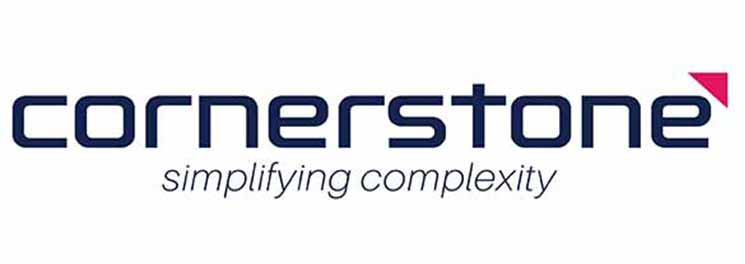
Carving the Elephant: Why Finance and Supply Chain Projects Should be Staged for Success
What is the carved elephant approach to project delivery – and how can it help Finance and Supply Chain leaders?
You’ve probably heard some variation of the African proverb about eating an elephant, which is along the lines of “the best way to eat an elephant in your path is to cut him up into little pieces”.
It sounds rather gruesome, however there’s an underlying message to keep in mind: breaking down all large challenges into smaller sections will make any task achievable – no matter how elephant-sized it may seem from the outset.
When it comes to the world of Finance and Supply Chain transformation and improvement projects, there’s a lot to like about the carved elephant approach – that is, breaking down (or chunking up, if you prefer) larger projects into smaller pieces or stages. We’ll take a look at why that is in a moment.
What is the carved elephant approach?
While staged project delivery is hardly a new concept, we’re going to start with what may be a controversial statement: no project should be planned out to last longer than six months, or nine months at a stretch, according to the project delivery experts at Quay Consulting.
In our experience, if the scope is well defined, there are few reasons to take a project beyond a six-to-nine month time frame. That said, there can be some exceptions. The key here is that they should be exceptions and therefore – rare.
But does this apply to major transformation – particularly programs that can be reasonably expected to take years, rather than months? This is where it helps to be precise with language: your transformation program is the roadmap to get from A to B, and it’s a pretty significant change. Underneath that are the required projects to get you there. And our rule of thumb is to keep those projects short (and hopefully sweet).
While it can be tempting to start out with a big dream or vision and work backwards with detailed plans from there, in reality this approach to project delivery rarely works (unless you are building major infrastructure or other projects of national significance, which few of us are).
A better approach is to start with your big dream or vision (your strategically aligned end state); then break the bigger program down into six month phases (or less). You would then only create detailed plans for the immediate road ahead, leaving the months or years beyond that as an outline.
An essential final step of your six-month project is phasing it into BAU operations. Once that’s in hand, it’s time to move onto your next chunk or stage. Rinse and repeat as you move through six-to-nine month cycles (remember, closer to six is preferable).
Of course, it’s very unlikely that every part of every program will be able to be carved up into a neat six-month delivery timeframe. However, in the world of Finance and Supply Chain, those situations should be rare.
So why, exactly, does the carved elephant approach to projects work so well?
Carved elephant projects are better for budgets.
Noting that many of us find ourselves in a resource-constrained environment right now, carved elephant projects are better from a budget perspective. It will always depend on your organisation’s unique processes for raising business cases, however in general it’s going to be an easier proposition to gain approval for three or four smaller projects of $100,000 each (for example), spread across two or three budgeting cycles; rather than requesting the entire project cost of $400,000-plus up-front.
Carved elephant projects are better from a risk perspective.
While all projects are inherently risky, staging your project can minimise much of the risk – particularly when we’re talking about longer-term transformation programs. Smaller projects can help your project governance model and even streamline your internal project management function, because they require fewer resources and oversight.
Carved elephant projects may be less work in the long run.
The external environment is shifting quickly – so quickly, in fact, that any detailed planning you do for a project beyond a six-to-nine month timeframe may need to be redone further down the track, because something about your external operating environment has changed so significantly. By keeping your project chunks small and manageable, you’re likely to avoid regular rework activity.
Carved elephant projects are better for your people.
More often than not, your Franken-System is stitched together with the institutional knowledge of a small group of employees, who have created the monster out of necessity over a period of years or even decades. It’s only when that employee leaves the organisation that the horrible truth becomes clear: no one else has the knowledge to manage the Franken-System.
Carved elephant projects are better for your people.
While a handful of people may thrive on lots of change in disruption, most people won’t. Staged projects allow you to deliver more manageable incremental change using agile methodology, since your chunks are integrated into BAU as you move through the overall program.
For those working on the project itself, providing a clearly visible horizon will help keep them engaged and hopefully, minimise burnout and churn (particularly if you’ve got your high performing talent working on the project).
What do carved elephant projects look like in practice?
How you carve the elephant on your next Finance or Supply Chain project is going to depend on several factors: what you’re trying to achieve, where you’re starting from, cultural factors and budget; to name just a few. It always helps to have independent advice from an external expert supporting your internal project experts to make these decisions, because they can supplement that essential domain expertise with knowledge acquired from similar projects, in similar organisations and industries.
Cornerstone Performance Management are enablers of change and transformation in Supply Chain, Information Management, Financial Planning & Analytics, Management Consulting, Project Management, and Managed Application Services. Meet our team or reach out to have a discussion today.





